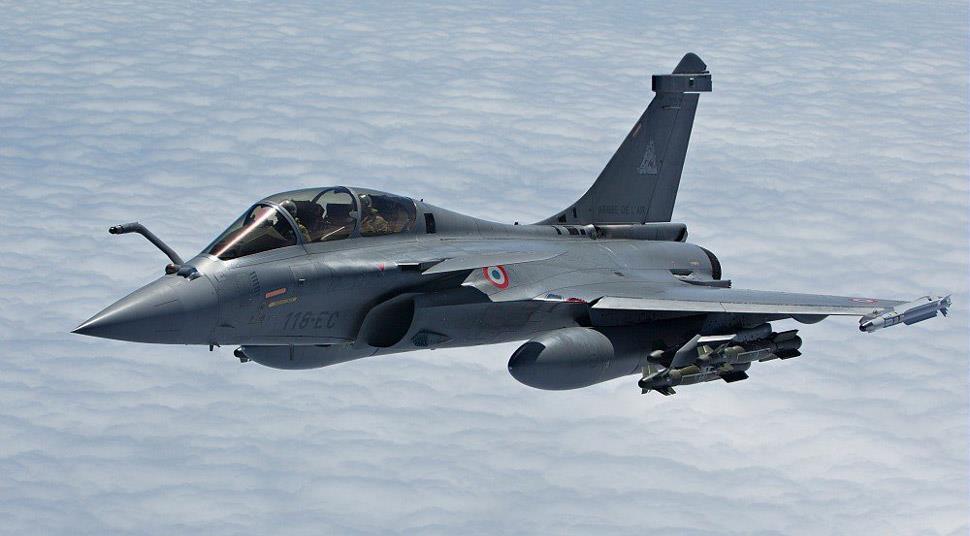Navy issues RFI for 57 carrier fighters
by Saurabh Joshi • January 25, 2017 •
A little more than a month after the Chief of Naval Staff, Admiral Sunil Lanba, announced that the Indian Navy intended to forego the acquisition of the naval Light Combat Aircraft (LCA) and look elsewhere for new fighters, the navy issued a Request For Information (RFI) for 57 Multi Role Carrier Borne Fighters (MRCBF), last week.
According to the RFI, “The MRCBF are intended as day and night capable, all weather multi-role deck based combat aircraft which can be used for Air Defence (AD), Air to Surface Operations, Buddy Refuelling, Reconnaissance, EW missions etc from IN aircraft carriers.”
The navy stipulates that the eventual acquisition process will be awarded under the terms of the Defence Procurement Procedure of 2016 and will require deliveries of the aircraft to ‘commence within three years post conclusion of contract, and be completed within further period of three years’.
Responses to the RFI have to be submitted within four months from the date of issue and qualifying vendors will be shortlisted for issue of Request For Proposal (RFP).
The eventual RFP will be in accordance with the Single Stage-Two Bid System. The validity of commercial offers would be at least 18 months from the date of submitting of offers.
The RFI also makes clear that transfer of technology and license production will be required as part of the acquisition of the fighters.
The RFI does not stipulate the required number of engines or if the aircraft is STOBAR or CATOBAR capable – and requires information in either case. “How many engines does the aircraft have? Does the aircraft have capability to operate from both STOBAR (Short Take-off But Arrested Recovery) and CATOBAR (Catapult Take-off But Arrested Recovery) aircraft carriers without any modification to the aircraft,” asks the RFI.
It goes further, to ask:
Is the Main Landing Gear capable of withstanding loads of holding on Restraining Gear System fitted on IN STOBAR aircraft carriers at maximum afterburner rating?
Is the Nose Landing Gear designed and capable of undertaking Catapult Launch from contemporary Steam and Electro Magnetic Aircraft Launch (EMAL) systems?
Is the aircraft capable of being launched from 13o and 14° Ski-Jumps having a parabolic profile (would be provided on request) using afterburner?
Is the aircraft capable of being launched from conventional steam catapult and EMALS?
What is the certified max Launch Weight for CATOBAR? Provide CATOBAR specifications.
Is the aircraft capable of arrestment with Svetlana Arresting Gear fitted on Indian aircraft carriers, Mark 7 Mod 3 arresting gear and AAG? Specify landing Weight Vs WOD combinations considered feasible.
Interestingly, the RFI also requires vendors to supply ‘Flight Manuals (including performance graphs from STOBAR and CATOBAR aircraft carriers)’ and asks about single-engine recovery capability in the case of twin-engine fighters.
The general Operational Clean Configuration (OCC) configuration ‘implies carriage of four Beyond Visual Range (BVR) missiles and two All Aspect Air-to-Air Missiles (A4M) with 75 % internal fuel and 100 % gun ammunition. Clean Configuration implies the aircraft with no external load and full internal fuel and gun ammunition’.
The RFI also adds, “Additional information on the ships that the MRCBF is expected to operate, may be sought for response and establishing feasibility of operating the aircraft from the same.”
Significantly, one question in RFI asks:
Would the OEM be willing to provide ICD and source codes to the Buyer for integration of future indigenous equipment?
Another:
Is it possible, at ‘O’ level, to remove and install an engine onboard the aircraft carriers and clear the aircraft for flight in not more than one hour?
Besides these, the RFI asks about multi-mode Active Electronically Scanned Array (AESA) radar, Infra Red Search and Track (IRST), Laser Range Finder, Helmet Mounted Display or Direct Retinal Display (HMD/DRD) and the ability to fit indigenous equipment.
Source

